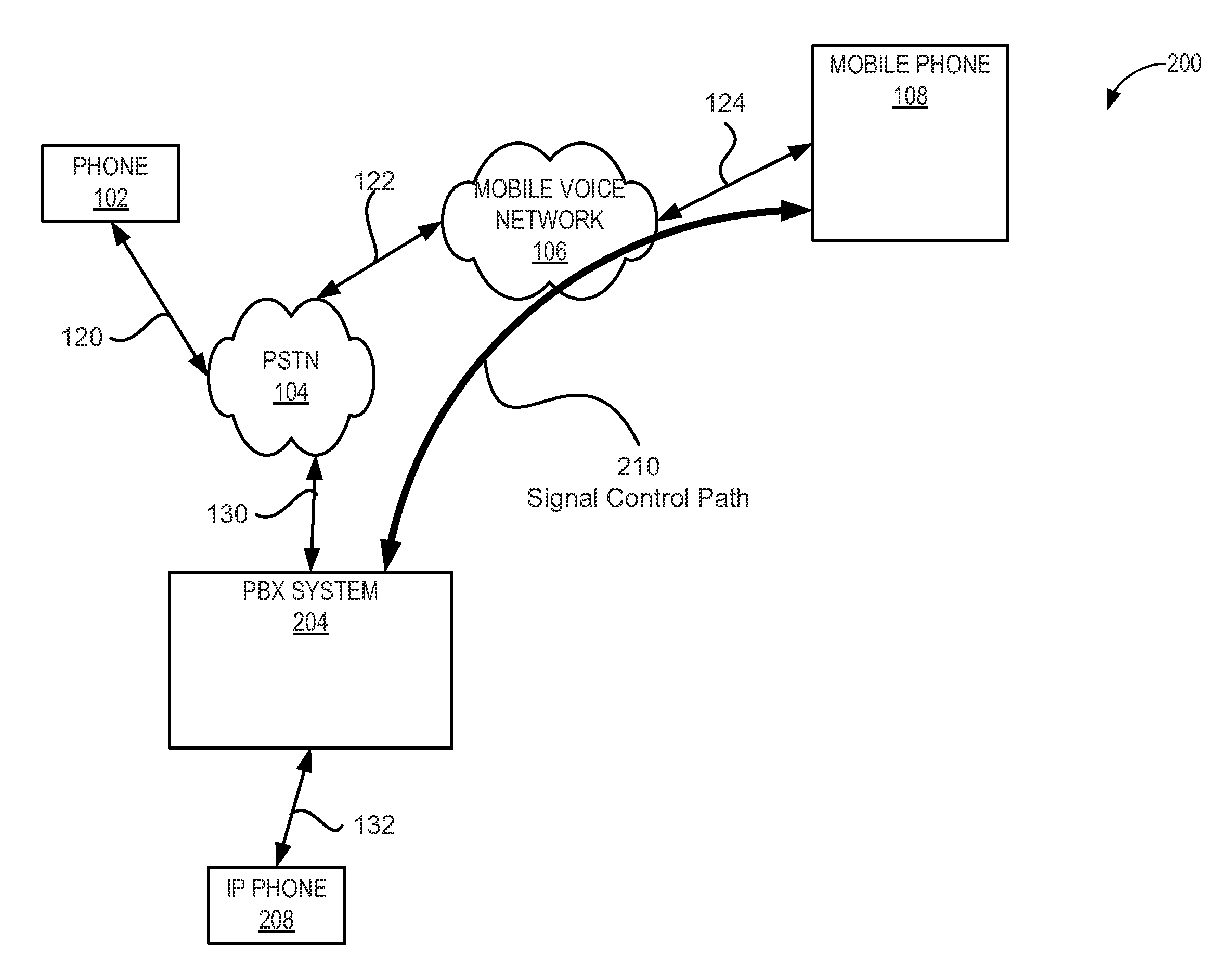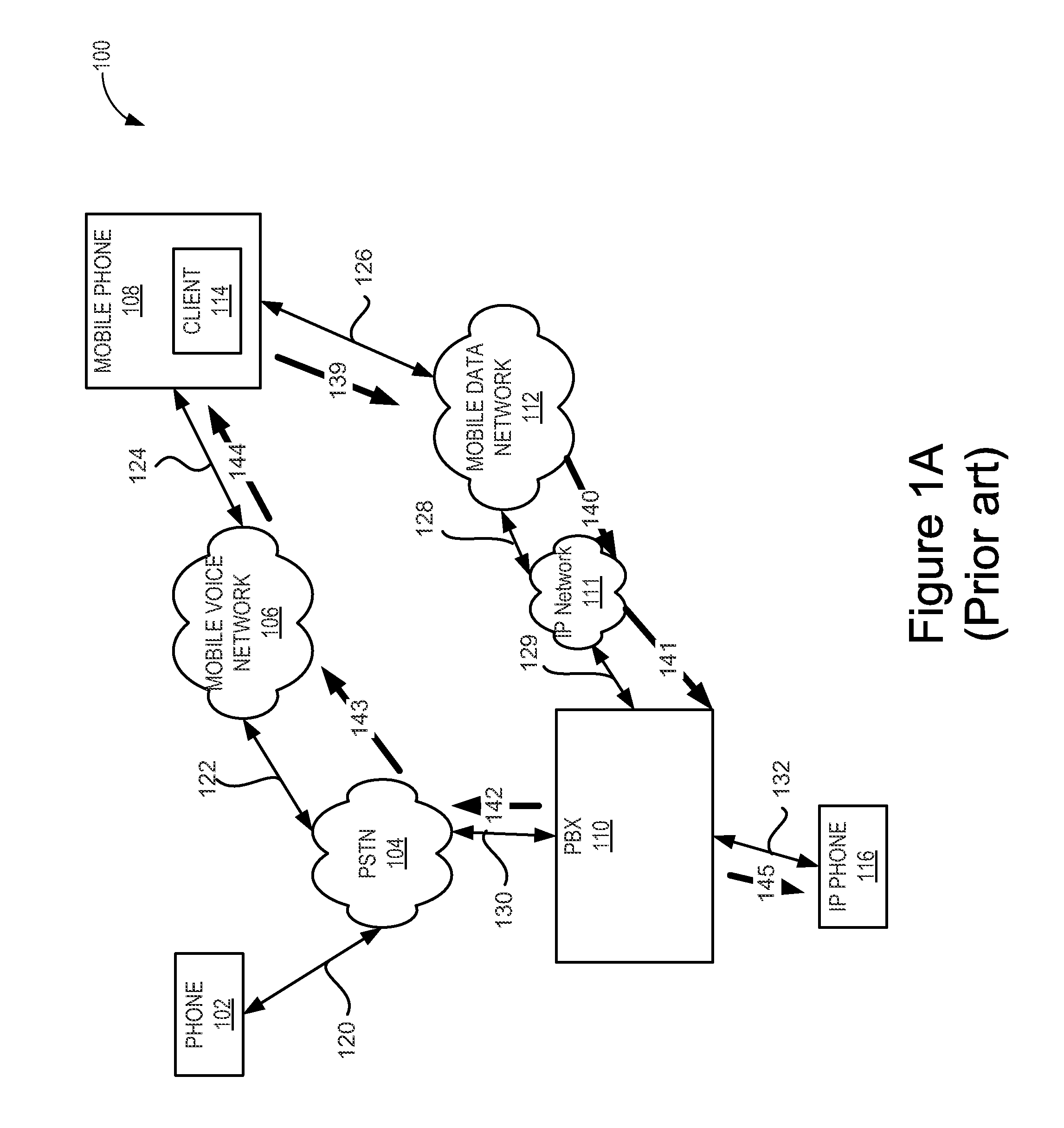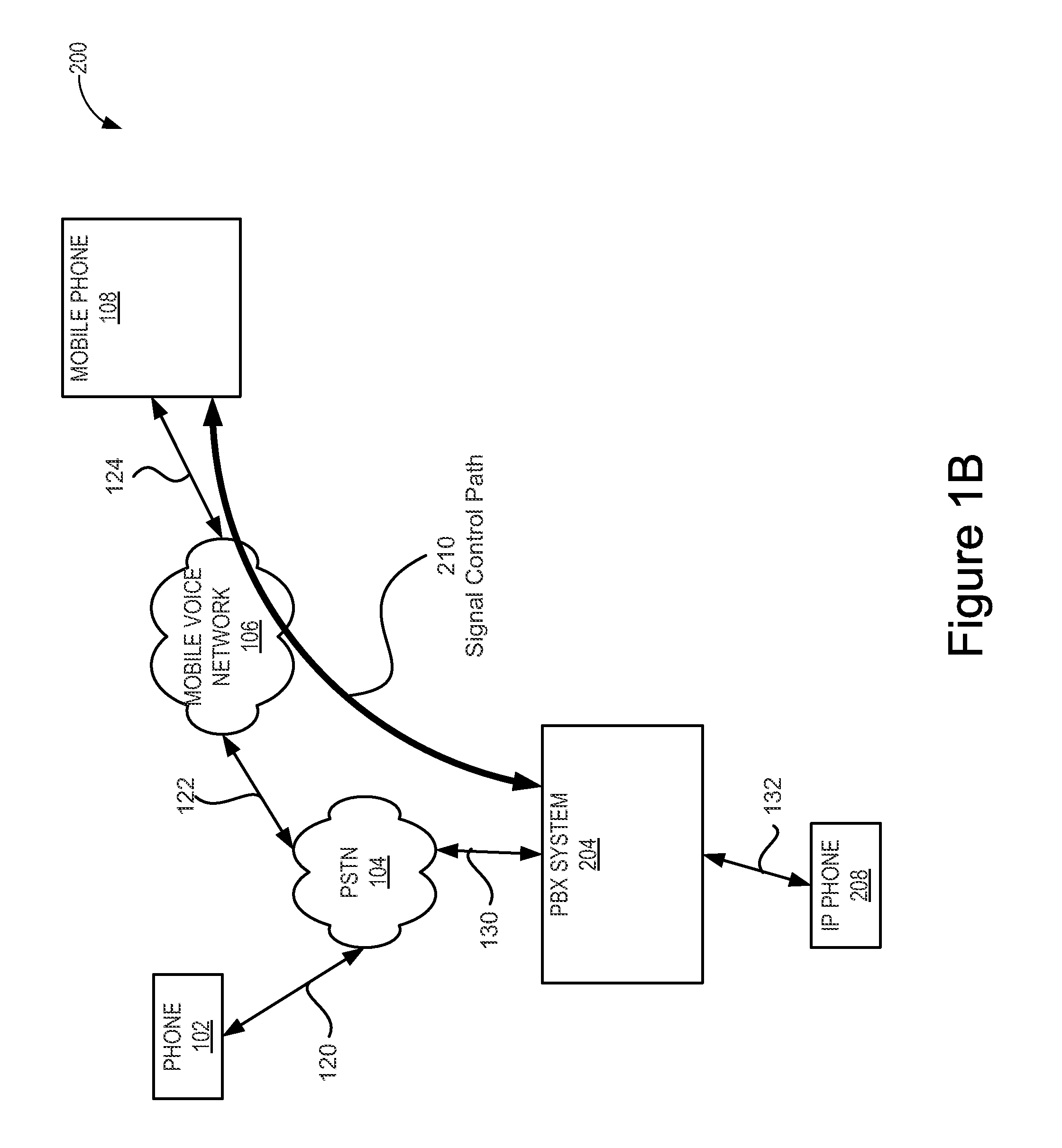Mobile phone integration with a private branch exchange in a distributed telephony system
a distributed telephony system and mobile phone technology, applied in hybrid systems, wireless network protocols, wireless commuication services, etc., can solve the problems of inability of pbx b>110/b> to provide pbx-functionality to mobile phones, limitations of existing pbxs b>110/b>, and inability of pbx b>110/b> to provide pbx-functionality to
- Summary
- Abstract
- Description
- Claims
- Application Information
AI Technical Summary
Benefits of technology
Problems solved by technology
Method used
Image
Examples
embodiment 200
[0059]In the illustrated embodiment 200, the mobile phone 108 is communicatively coupled to the mobile voice network 106 via signal line 124. The mobile phone 108 sends data to the mobile voice network 106 and receives data from the mobile voice network 106 via the signal line 124. For example, the mobile phone 108 sends data packets having voice transmission data associated with a phone call from the mobile phone 108 to the mobile voice network via the signal line 124.
[0060]The mobile voice network 106 is communicatively coupled to the PSTN 104 via signal line 122. The mobile voice network 106 transmits data to the PSTN 104 and receives data from the PSTN 104 via signal line 122. For example, the mobile voice network 106 transmits data packets having voice transmission data associated with phone calls to the PSTN 104 via signal line 122.
[0061]The PSTN 104 is communicatively coupled to the phone 102 via signal line 120. The PSTN 104 transmits analog signals to the phone 102 and rece...
embodiment 202
[0066]The functionality of the mobile phone proxy 206 will now be described with reference to FIGS. 2A-2C and 3A-3F. The functionality of the direct trunk line is described only with reference to FIGS. 2A-2C. FIG. 2A depicts an embodiment 202 in which a phone call is initiated by the mobile phone 108 to the IP phone 208. The mobile phone 108 initiates a phone call to the IP phone 208. For example, the IP phone 208 has a four digit PBX extension number 0085 and a user of the mobile phone 108 enters the four digit PBX extension number 0085 into a keypad of the mobile phone 108 and then initiates a call to that extension. The mobile phone 108 sends 240 the dialed PBX extension number to the mobile voice network 106 via signal line 124. For example, the mobile phone 108 sends 240 the PBX extension number 0085 to the mobile voice network 106.
[0067]The mobile voice network calls 241 the mobile phone proxy 206 using the direct trunk line 232 and provides a mobile phone ID and the dialed PB...
embodiment 400
[0081]FIG. 3A depicts an embodiment 400 of the system in which a phone call is initiated by the mobile phone 108 to the IP phone 208. The mobile phone 108 initiates a phone call to the IP phone 208. For example, the IP phone 208 has a four digit PBX extension number 0085 and a user of the mobile phone 108 enters the four digit PBX extension number 0085 into a keypad of the mobile phone 108 and then initiates a communication to that extension. The mobile phone 108 sends 310 the dialed PBX extension number to the integration device 308 via the signal line 124. For example, the mobile phone 108 sends 310 the PBX extension number 0085 to the integration device 308 via signal line 124.
[0082]In one embodiment, the mobile phone 108 initiates the phone call to the IP phone 208 by sending 310 a dialed or PSTN number to the integration device 308. The integration device 308 receives the dialed number. The integration device 308 sends 311 the dialed number and the mobile phone ID to the IP net...
PUM
 Login to View More
Login to View More Abstract
Description
Claims
Application Information
 Login to View More
Login to View More - R&D
- Intellectual Property
- Life Sciences
- Materials
- Tech Scout
- Unparalleled Data Quality
- Higher Quality Content
- 60% Fewer Hallucinations
Browse by: Latest US Patents, China's latest patents, Technical Efficacy Thesaurus, Application Domain, Technology Topic, Popular Technical Reports.
© 2025 PatSnap. All rights reserved.Legal|Privacy policy|Modern Slavery Act Transparency Statement|Sitemap|About US| Contact US: help@patsnap.com



